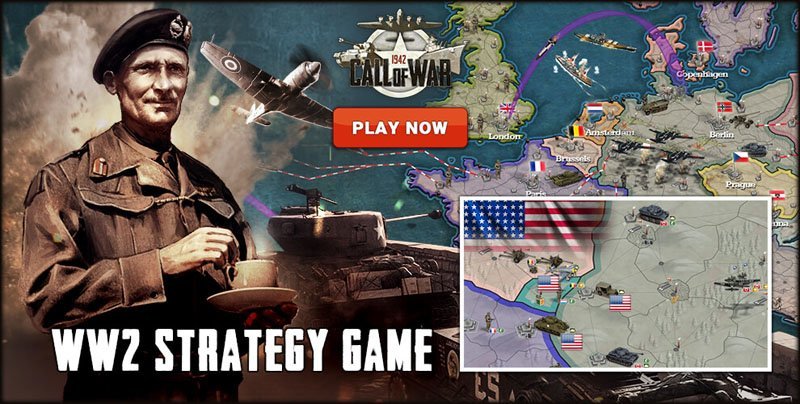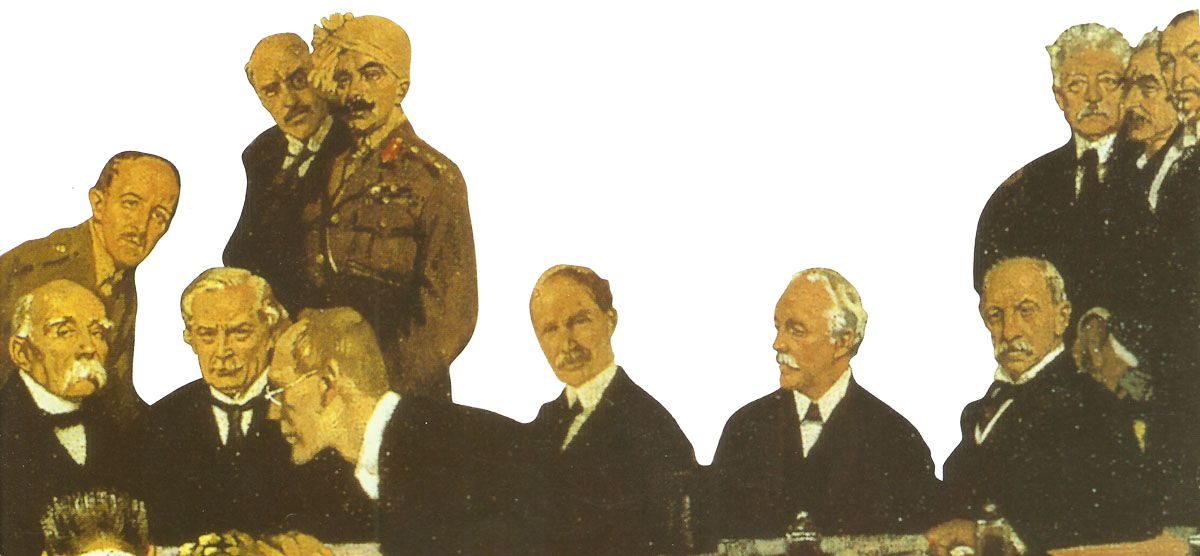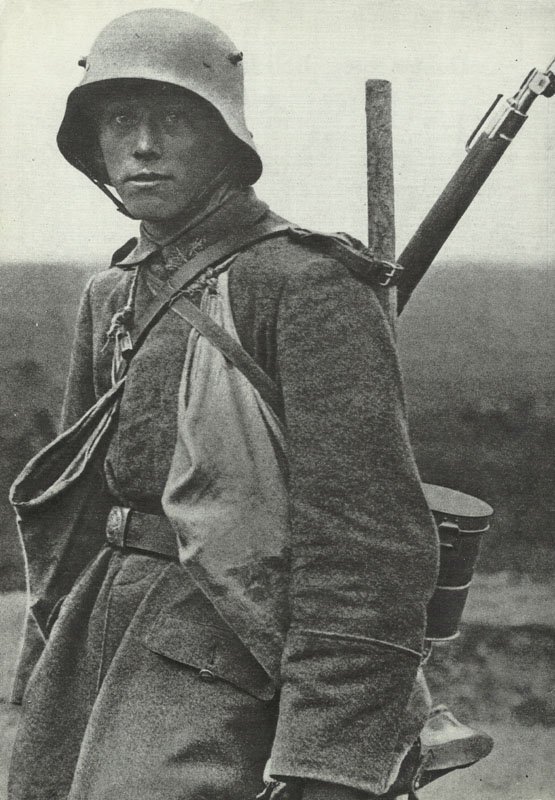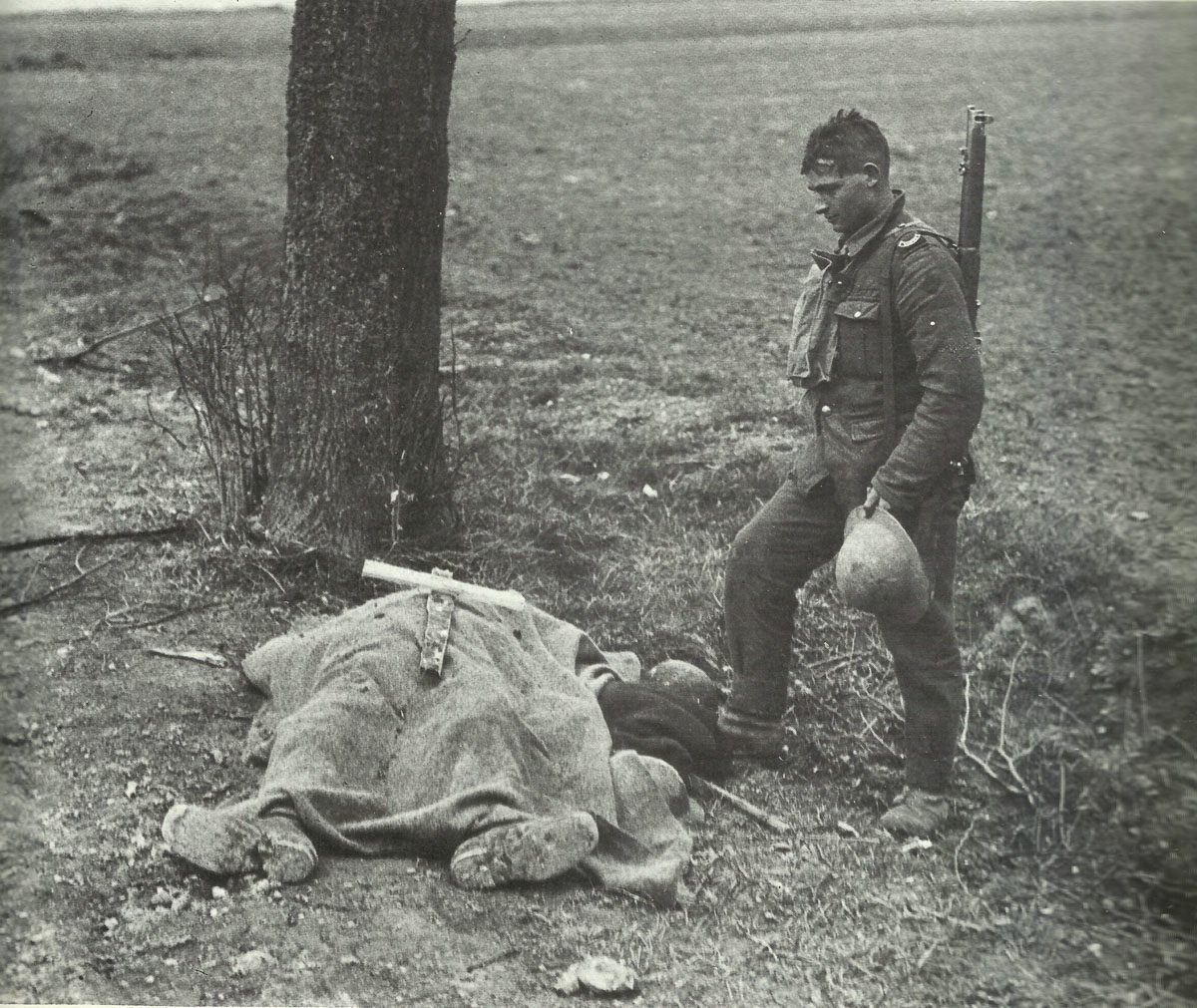The battle of the machine-guns on the Somme from July 1 to November 18, 1916.
The battlefield and forces, the machine-gun decides a battle, fire and movement and losses.
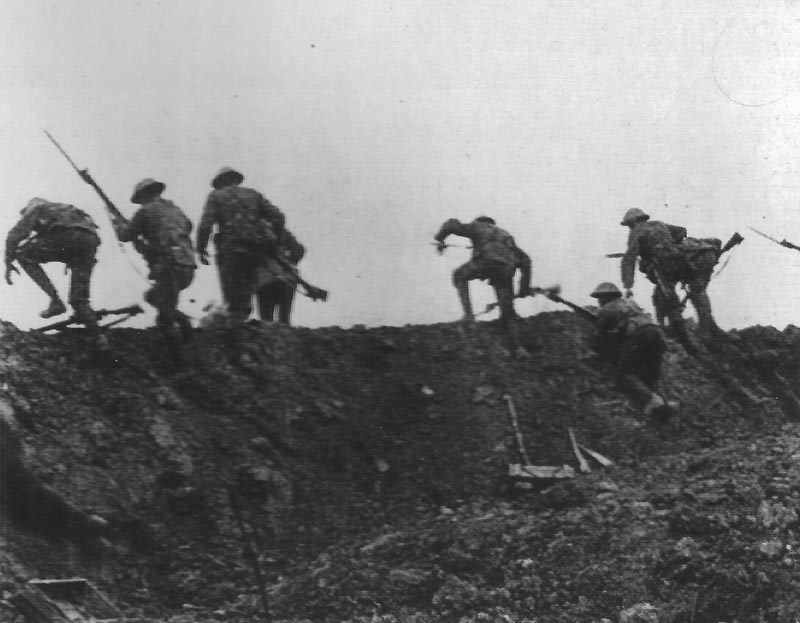
Not any battle in World War One had been as dominated by the machine-gun as the Allied 1916 summer offensive, the Battle of the Somme.
The Battle of the Somme
Table of Contents
The Battle of the Somme was one of the largest and bloodiest battles of World War I. It took place between July 1 and November 18, 1916, along the Somme River in France.
Overview
Participants: British and French forces (Allies) against the German Empire.
Objectives: The Allies aimed to relieve pressure on the French at Verdun and break through German lines.
First day: July 1, 1916, was the bloodiest day in British military history, with nearly 60,000 casualties.
Duration: The battle lasted for 141 days.
Casualties: Over 1 million men were wounded or killed (about 420,000 British, 200,000 French, and 500,000 German).
New technology: Tanks were used for the first time in warfare on September 15, 1916.
Trench warfare: The battle was characterized by long periods of trench warfare and minimal territorial gains.
Result: The battle ended in a stalemate, with the Allies gaining only about 6 miles of territory.
Impact: The battle had a profound effect on both sides, causing significant losses and shaping public perception of the war.
Legacy: The Battle of the Somme is remembered as a symbol of the futility and enormous human cost of trench warfare in World War I.
The battle is considered one of the defining events of World War I and had a lasting impact on military strategy and public memory of the conflict.
The battle of the machine-guns
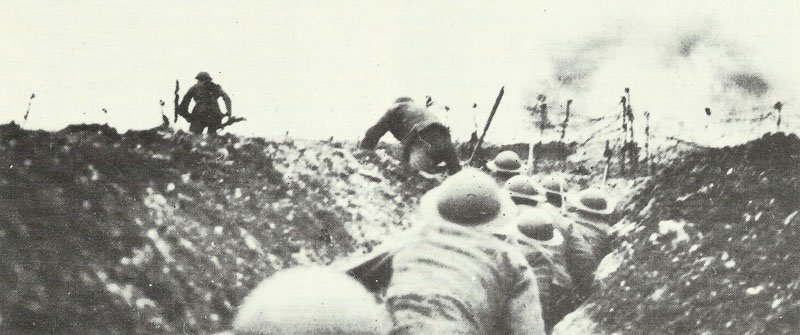
The effect of the German Bergmann and MG08 ‘Spandau’ machine-guns continues to be a long time after the ‘day of breathtaking summer beauty’, as Siegfried Sassoon described 1 July 1916, the starting morning of the Battle of the Somme.
The picture of the skirmish lines of British infantry, Lee-Enfield Rifles at the high port position, eliminate in the barbed wire has created not alone the West’s understanding of modern war, however of current way of life itself. A lot more than just soldiers fell to the machine-guns on the Somme. The progressive and organized pre-1914 society perished there too.
The serious victims caused on assaulting soldiers by German machine-guns at Neuve Chapelle and Loos in 1915 dominated the British strategy for the Somme. The consequences that the British received from those fights had been that they had to make use of their artillery guns to send much more loads of high explosive shells onto the machine-guns prior to the infantry attack had been ordered. Plenty of shells, it had been reasoned, would lead to get rid of machine-guns.
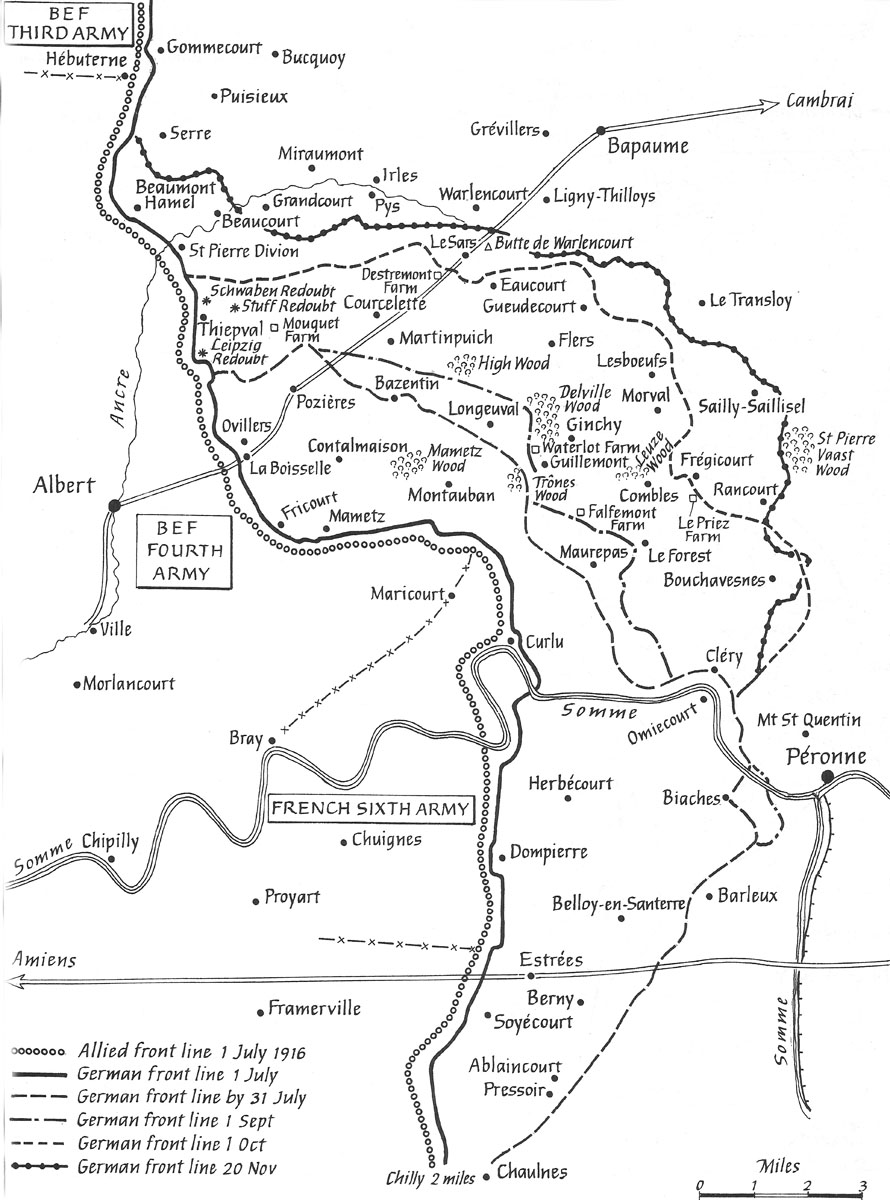
Somme Forces, July 1, 1916:
Force | Divisions | Artillery |
|---|---|---|
BEF (4th and parts of 5th Army) | 18 divisions (incl 4 reserves and 5 cavalry) with c.500,000 soldiers and 100,000 horses | 1,637 guns (incl 427 heavy) |
French 6th Army (Fayolle) | 13 divisions (incl 8 reserves) | 1,089 guns |
German 6th Army (F Below) | 11 divisions (incl 5 reserves) | ? |
The machine-gun decides a battle
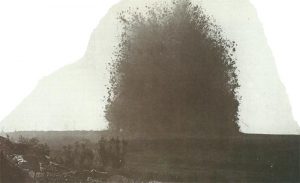
The BEF initial onslaught had been supposed in order to wipe out the machine-guns. The infantry would then, as outlined by strategy, just capture the ground. However, regardless of the duration of the British barrage, the German machine-guns on the Somme demonstrated that firepower can’t win a battle alone. The front-line machine-guns overcome the barrage in their strong dugouts.
This kind of tutorial of the machine-guns on the Somme battle relearned by the US Marines on Tarawa in 1943 during WW2 and numerous occasions throughout the Vietnam War. Large firepower (even the 7-day barrage that preceded the beginning on the Somme) cannot wipe out an entrenched opponent per se.
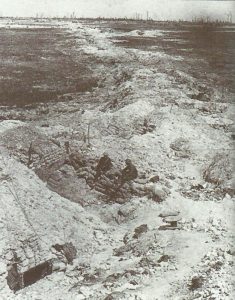
Afterwards in World War One the barrage evolved into the incredibly powerful, brief ‘hurricane’, typically making use of intensive gas for suppression. The barrage before July 1, 1916, furthermore struggled with a large dud rate along with a deficiency of heavy weapons that could penetrate the strong bunkers in which the German machine-gunners with their machine-guns had been waiting prior to ten-minute period, right before 07.00 hours, between the minute the barrage lifted and the whistles blew for the British infantry to go over the top.
The 1915 combats demonstrated that an individual machine-gun could beat an assaulting battalion if in a position to fire unsuppressed. On 1 July 1916 battalion after battalion discovered that the effectiveness of the machine-gun had not been overestimated. To illustrate, the 7th Battalion, Green Howards plus the 10th Battalion, West Yorkshire Regiment assaulting the village-fort of Fricourt (the German defense was based on these village-forts, linked by trenches) where each destroyed within 3 minutes by a solitary machine-gun.
The 16th Battalion, Northumberland Fusiliers assaulted in the direction of Thiepval with superb bravery, like dribbling a football across no man’s land. There were 4 machine-guns face-to-face to the battalion, and just Eleven soldiers from the assault companies came back. The plot had been duplicated all day long down and up the British front.
The casualties (51,410 men, of whom 19,240 were killed or died of wounds) amounted to 50 % of the other ranks, and 75 % of the officers, who went over the top on 1 July. Almost all of these victims were created by roughly One hundred machine guns.
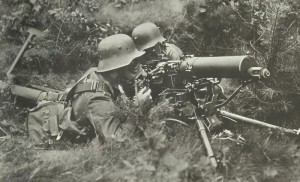
The machine-gun was capable of decide the course of the Battle of the Somme in a manner that wouldn’t have been believed possible 2 years before. Many military realized the importance of the machine-gun in 1914, however it had been under circumstances of trench warfare that it demonstrated its actually decisive significance.
Since the industrial revolution, strategies have frequently lagged behind technology. Similar to the British military methods were insufficient to handle enemies equipped with Mauser magazine weapons at the beginning of the Boer War, or even the probably modern-day army with the highest firepower from Israel, had been astonished by the anti-tank guided missile at the beginning of the 1973 Middle East War, the machine-gun dictated a fresh period in battlefield tactics.
Fire and movement
On the Battle of the Somme the machine-gun had been primarily a defensive weapon. Since the Germans were on the general defensive their machine-guns had an improved chance to decide the struggle.
The two fundamental aspects of tactics are usually movement and fire. Tripod-mounted medium machine-guns take time and effort to maneuver and can’t fire while doing so. Both the Germans and the British had realized this in 1914, and had used light machine guns (the Germans the Bergmann gun and the British the Lewis Gun) that enabled assaulting infantry to handle their machine-guns in advance where the medium machine-guns couldn’t proceed. Light machine-guns saw wide-ranging action on the Somme.
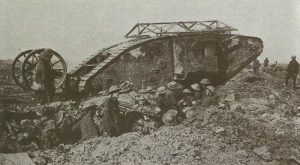
The British had been the first to understand, nevertheless, that if you intend to create a machine-gun that is in fact perfect for both movement and fire, it needed to be included a self-propelled armored mount in a position to moving across the battlefield: in other words, a tank. These tanks first arrived in the later phases of the battle, on September 15, 1916.
The machine-gun had come up with dilemma of trench warfare. What’s more, it offered an answer.
Machine-guns, particularly the tripod-mounted medium machine-guns, are usually best performing on the defensive to a large aspect, because whether they are moved forward, it’s difficult to supply the incredible amounts of ammo they fire in action. The German machine-guns on July 1 all had huge stores of combat-ready ammo, in contrast to ammo for the Lewis guns the British brought with them needed to be transported all over no man’s land by carrying parties.
The machine-gun not simply fires faster than a rifle however it is much better to handle as well as direct. Under combat conditions its challenging for NCO’s or officers to direct the fire of riflemen, much better to lead an individual machine-gun. In modern warfare riflemen are often cut down to the job of bystanders because of the sense that their personal guns are inferior: in WW2, US Brigadier-General S.L.A. Marshall discovered that usually just 10-15 % of riflemen in fact fired their weapons in action. Machine gunners, on the other hand, nearly always fired.
The machine-gun crews of World War One learned they had been the main target for all the firepower that is usually aimed against them. In addition, they suspected that not many infantrymen took machine-gunners as PoW’s.
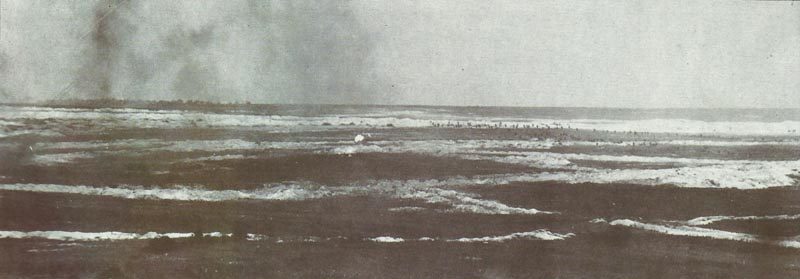
Nevertheless, German machine-gunners on July 1 operated their weapon until they repulsed the assaults directed towards them or died under the sword bayonets of the Lee Enfield rifles. In the phrases of Lieutenant-Colonel A. Carton de Wiart, VC, ‘The German machine-gunners were outstanding, nearly regularly incredibly heroic men plus the pick of the German Army’.
The British Army named its Machine Gun Corps ‘The Suicide Club’. Their German counterparts might well accomplished similar.
The character of the Somme pointed out the German use of machine-guns, however this didn’t suggest that the British didn’t make use of their machine guns successfully too. Technically, they were finer quality than the Germans in a few respects, as had been proven by their skill for offering supporting fire over the head of attacking soldiers.
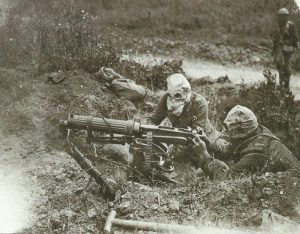
In the subsequent phases of the battle, Vickers guns could fire massive ‘barrages’, regularly ranged in like artillery to fire indirectly, to shield the flanks of attacking troops and also to interdict German movement.
German defensive strategies on the Somme had been founded on counter-attacking every British conquest of their defenses practically immediately, prior to the British could bring in their reserves and strengthen the position. These counter-attacks generated serious German casualties however again and again forced the British away from hard-won objectives such as, on July 1, the Thiepval Wood and Schwaben Redoubt, where the 36th Ulster Division had been repulsed.
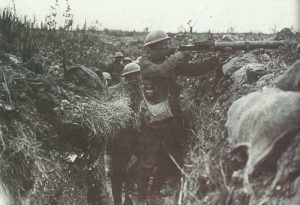
These counter-attacks could have been easier were it not for the Lewis guns transported by advancing British soldiers. While Lewis guns (in contrast to the bulkier tripod-mounted Vickers) could be moved into an assault, they weren’t quite effective against dug-in positions. It was in support of soldiers cleaning out strong points as well as in beating counter-attacks that the Lewis demonstrated its importance on the Somme, and the quantities of Lewis guns taken by British infantry had been improved consequently.
The Somme demonstrated not alone the effectiveness of the machine-gun, but in addition a number of the technical and tactical counter-measures that were developed as a result of its importance on the battlefield.
This could be noticed in the offensive techniques employed on the French area of the frontline on July 1. Profiting from the expensive lesson of Verdun, the French implemented more fluid and versatile formations compared to extended British skirmish lines. The French got fewer casualties than the British as well as achieved several of the Allied triumphs of July 1.
The British not simply used the tank Mark I as a response to the machine-gun (which it remains nowadays) but in addition began to focus on ‘creeping’ artillery barrages in order to reduce the machine-guns until the assaulting infantry had been within a bayonet’s reach.
In the afterwards phases of the battle the British moved to dawn assaults (for example that which had taken most of Bazentin Ridge on July 14), dusk assaults (as on the Ancre Heights on October 1), along with night assaults (as that on Delville Wood on July 22-23, the wood being captured by July 26).
The potency of the machine-gun put a greater priority on operations at nighttime as well as in lowered visibility, and that’s why in June 1982, the British Army launched their assault on the Argentine defenses around Port Stanley overnight.
Machine-guns are simply as lethal nowadays as they were during the Battle of the Somme. The BEF of 1916 demonstrates that all the courage on the planet can’t success alone opposed to the rough facts of modern warfare. By deploying tanks, more potent and responsive artillery in order to suppress the machine-guns, less vulnerable infantry methods, assaulting in circumstances of reduced visibility, there has never ever been a duplicate of the massacre from July 1, 1916, on the first day of the Battle of the Somme.
Somme Losses July 1 – November 18, 1916:
Forces | Soldiers | Tanks | Guns | Aircrafts |
|---|---|---|---|---|
British (55 divisions engaged) | 419,654 (35,939 Australian; 26,574 Canadian; 9,956 NZ) | 16 | ? | 972 (icl. 190 missed and accidents) |
French (20 divisions engaged) | 195,000 | - | ? | ? |
German (95 divisions engaged) | 419,989 (incl 72,901+ PoWs) | - | 1,477+ (incl 303 captured), 215 mortars, 918 MGs | 164+ and 6+ balloons shot down |
References and literature
The Illustrated Encyclopedia of Weapons of World War I (Chris Bishop)
Illustrierte Geschichte des Ersten Weltkriegs (Christian Zentner)
History of World War I (AJP Taylos, S.L. Mayer)
Der Genius des Krieges (Trevor N. Dupuy)




